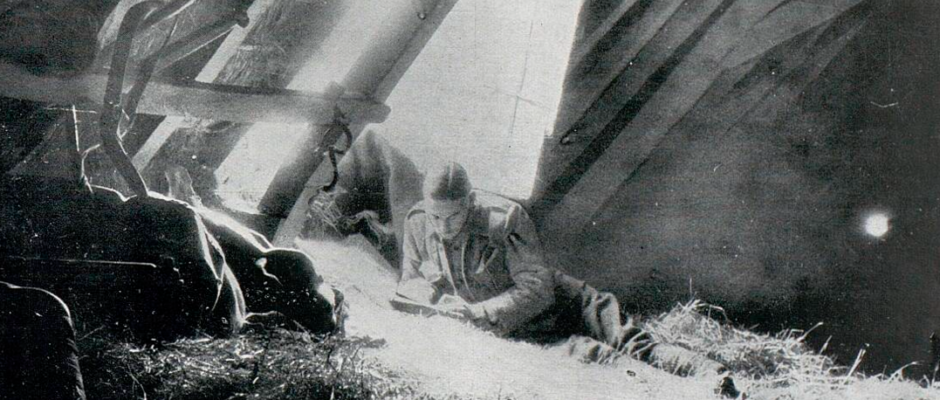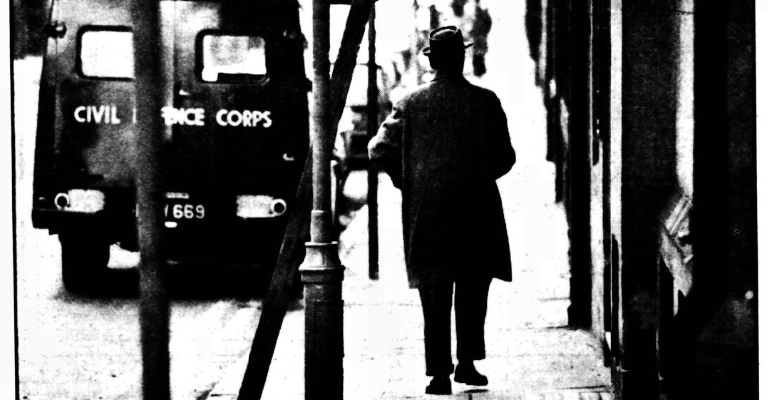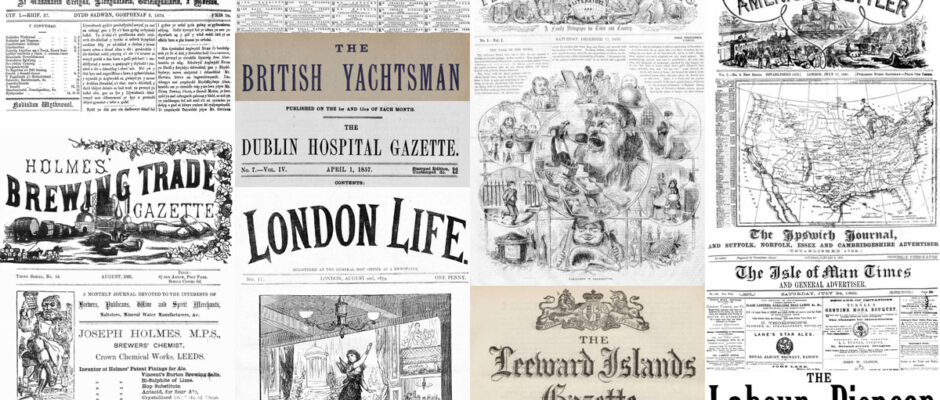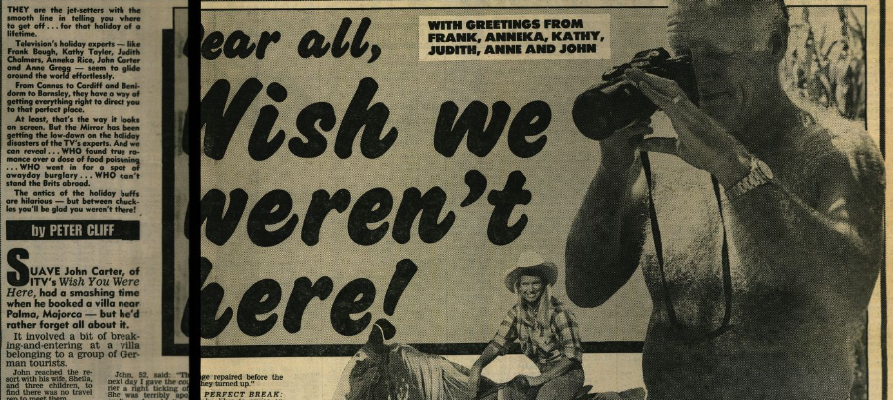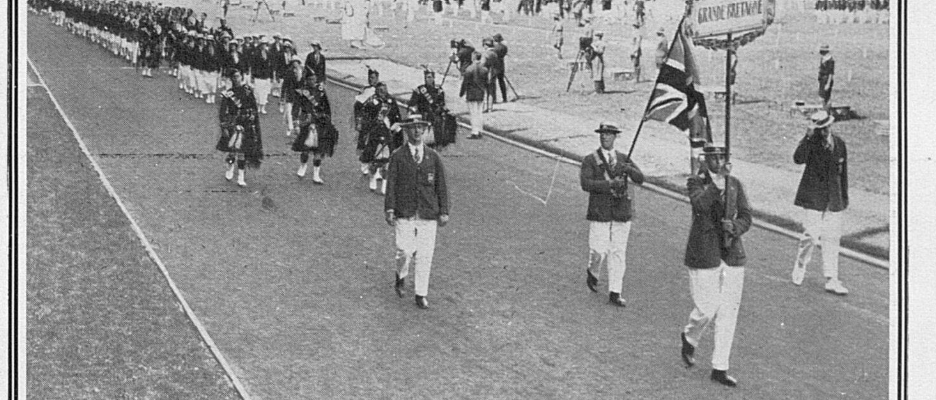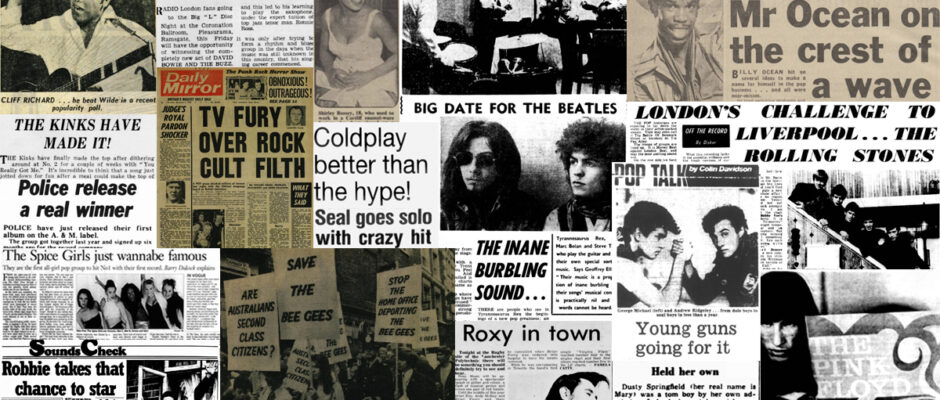Sent to the front lines, soldiers in the First World War could only communicate home through letters. Although censored, these letters provided comfort to both those at home and those fighting in the trenches, and they were often reproduced by local newspapers. In this special blog, we’ve pulled out extracts from 30 different letters, sent by servicemen throughout the First World War, which were all featured by our newspapers. These 30 letters, sent by 30 different men, all provide a …
Featured
This October we’re exploring the historical superstitions and traditions from across the British Isles and Ireland. Here, we’ve compiled 30 of the most intriguing historical superstitions, sourced from our newspaper collection. From the more well-known superstitions, for example, not passing underneath a ladder, or throwing spilled salt over your shoulder, to those you may not have heard of, like giving a knife along with a penny, anyone?), without any further ado, here are 30 fascinating superstitions from history for you …
Tags
Since August 2021, the Archive has been working in partnership with the British Library to build a collection of free to view newspaper pages. This collection enables enhanced access to the diverse newspaper holdings of the British Library, with the titles, which have carefully curated by the British Library, spanning four centuries of news and covering not just Britain and Ireland, but the Caribbean, India, and beyond. You can search our free to view pages by creating a free account …
Tags
Today marks the release of over one million new free to view pages on the British Newspaper Archive. Thanks to our ongoing partnership with the British Library, we have now made over four million newspaper pages freely accessible since 2021. Our collection of over four million free to view newspaper pages represents a significant step in making historical resources available to more and more people, an effort to which the British Newspaper Archive and the British Library are firmly committed. …
Tags
Just when did ‘Brits abroad’ get their bad reputation? And when did the phrase enter the vernacular? In this special blog, we explore the shocking history of the ‘Brits abroad’ stereotype, and learn how although this group of badly behaving tourists got their name in the 1980s, the British abroad have a long history of causing upset on their travels. Last week, we looked at the rise of Brits travelling abroad using our newspapers, and this week, again using newspapers …
Tags
This August at the British Newspaper Archive we are taking a look at the history of holidays, and in particular, the history of British holidaymakers travelling abroad. Nowadays, the holiday season is synonymous with trips to the airport, with holidays abroad bookable at just the click of a button. Decades ago, however, travelling abroad was not that easy. With strict limitations on travel money, the difficulties of booking travel abroad, potential holidaymakers faced a range of challenges in getting away …
Tags
As the 2024 Paris Olympics begin, we at the British Newspaper Archive could not help but look back at the 1924 Paris Olympics, with the same city playing host to the summer Olympic Games exactly one hundred years ago. Paris had also hosted the Olympics in 1900, and so this year will be the third time that the city hosts the iconic sporting tournament. And the 1924 Paris Olympics would prove an iconic one for Britain, with gold medal wins …
Tags
With a history that winds all the way back to Anglo-Saxon and medieval farming practices, the story of allotments in the United Kingdom is as rich as the soil itself. From the General Enclosure Act of 1845, which aimed to give the landless poor an area to cultivate, to the ‘Dig for Victory’ campaign in the 1940s, all the way to the allotment renaissance of the 1990s, we will explore the history of allotments, using newspapers sourced from our Archive. …
Tags
Merseyside-born, Charlotte ‘Lottie’ Dod, is the youngest ever winner of the Wimbledon Ladies Singles Championship, achieving her triumph in 1887 at the tender age of 15 years and 285 days. She won the singles title a remarkable five times in total, between the years 1887 and 1893. An article in the Sheffield Independent chronicles Lottie’s first ever Wimbledon victory in 1887. About the ladies’ singles there is little to be said – only five entered as against eight last year. Miss …
Tags
From the 1950s onwards the United Kingdom has produced many extraordinary music icons in the arenas of pop, rock and more. The rise of these British music icons, both bands and solo artists, is chronicled throughout our newspaper Archive. And so, in this special blog, we’ve delved into our Archive to bring you early reviews of Britain’s biggest bestselling music artists. From Shirley Bassey to Duran Duran, from Kate Bush to the Rolling Stones, we’ve picked 42 music icons to …


